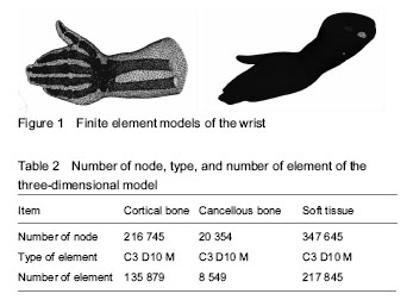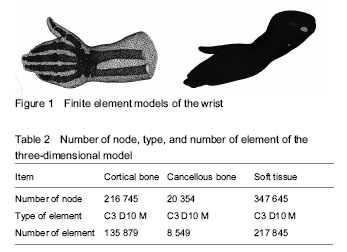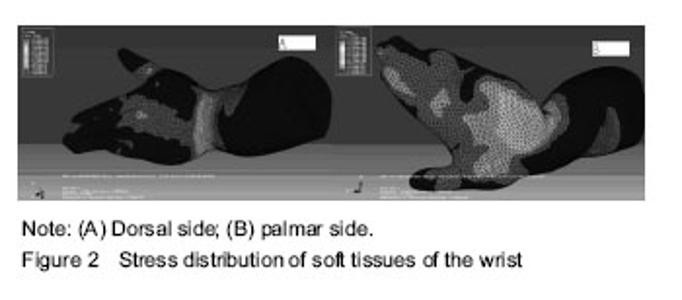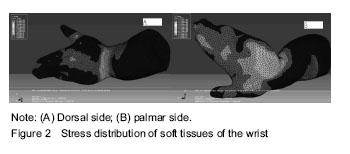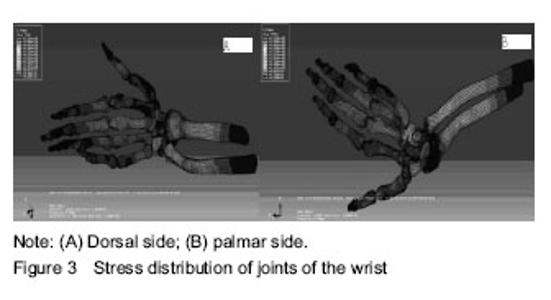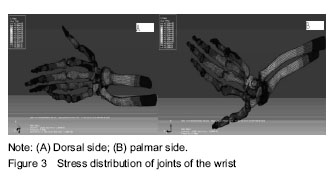| [1] Davis DI, Baratz M. Soft tissue complications of distal radius fractures. Hand C1in. 2010;26(2):229-235. [2] Abe Y, Fujii K. Arthroscopic-assisted reduction of intra-articular distal radius fracture. Hand Clin. 2017;33(4):659-668. [3] Suda AJ, Schamberger CT, Viergutz T. Donor site complications following anterior iliac crest bone graft for treatment of distal radius fractures. Arch Orthop Trauma Surg. 2018. doi: 10. 1007/s00402-018-3098-3. [4] Ficke B, Ransom EF, Hess MC, et al. Outcomes of staged treatment for complex distal radius fractures. Cureus. 2018;10(9):e3273. [5] Gu WL, Wang J, Li DQ, et al. Bridging external fixation versus non-bridging external fixation for unstable distal radius fractures: A systematic review and meta-analysis. J Orthop Sci. 2016;21(1):24-31. [6] Yang Z, Yuan ZZ, Ma JX, et al. Long-term efficacy of open reduction and internal fixation versus external fixation for unstable distal radius fractures: a meta-analysis. Zhonghua Yi Xue Za Zhi. 2017;97(41):3269-3272. [7] Chen K, Yang G, Ma C, et al. A meta-analysis of unstable fracture of distal radius treated with plate internal fixation and external fixator. Zhonguo Zuzhi Gongcheng Yanjiu Zazhi. 2013;17(39):6962-6968. [8] Taylor BC, Malarkey AR, Eschbaugh RL, et al. Distal radius skyline view: how to prevent dorsal cortical penetration. J Surg Orthop Adv. 2017;26(3):183-186. [9] Mathews AL, Chung KC. Management of complications of distal radius fractures. Hand Clin. 2015;31(2):205-215. [10] Taddei F, Pancanti A, Viceconti M. An improved method for the automatic mapping of computed tomography numbers onto finite element models. Med Eng Phys. 2004;26(1): 61-69. [11] Brekelmans WA, Poort HW, Slooff TJ. A new method to analyse the mechanical behaviour of skeletal parts. Acta Orthop Scand. 1972;43(5):301-317. [12] Sabalic S, Kodvanj J, Pavic A. Comparative study of three models of extra-articular distal humerus fracture osteosynthesis using the finite element method on an osteoporotic computational model. Injury. 2013;44:S56-61. [13] Wirth AJ, Müller R, van Lenthe GH. The discrete nature of trabecular bone microarchitecture affects implant stability. J Biomech. 2012;45(6):1060-1067. [14] Büchler P, Farron A. Benefits of an anatomical reconstruction of the humeral head during shoulder arthroplasty: a finite element analysis. Clin Biomech (Bristol, Avon). 2004;19(1):16-23. [15] Fürnstahl P, Székely G, Gerber C, et al. Computer assisted reconstruction of complex proximal humerus fractures for preoperative planning. Med Image Anal. 2012;16(3): 704-720. [16] Chandler JW, Stabile KJ, Pfaeffle HJ, et al. Anatomic parameters for planning of interosseous ligament reconstruction using computer-assisted techniques. J Hand Surg(Am). 2003;28(1):111-116. [17] Cheng HY, Lin CL, Lin YH, et al. Biomechanical evaluation of the modified double-plating fixation for the distal radius fracture. Clin Biomechanics(Bristol, Avon). 2007;22(5): 510-517. [18] Ledoux P, Lamblin D, Wuilbaut A, et al. A finite-element analysis of Kienbock’s Disease. J Hand Surg Eur Vol. 2008;33(3):286-291. [19] Majumder S, Roychowdhury A, Pal S. Effects of trochanteric soft tissue thickness and hip impact velocity on hip fracture in sideways fall through 3D finite element simulations. J Biomech. 2008;41(13):2834-2842. [20] Majumder S, Roychowdhury A, Pal S. Simulation of hip fracture in sideways fall using a 3D finite element model of pelvis-femur-soft tissue complex with simplified representation of whole body. Med Eng Phys. 2007;29(10): 1167-1178. [21] Nazar MA, Mansingh R, Bassi RS, et al. Is there a consensus in the management of distal radial fractures. Open Orthop J. 2009;3:96-99.[22] Araf M, Mattar Junior R. Arthroscopic study of injuries in articular fractures of distal radius extremity. Acta Ortop Bras. 2014;22(3):144-150. [23] Sherrington C, Whitney JC, Lord SR, et al. Effective exercise for the prevention of falls: a systematic review and meta-analysis. J Am Ger-iatric Soc. 2011;6(12):2234-2243.[24] Machold W. Reduction of severe wrist injuries in snowboarding by an optimized wrist protection device: a prospective randomized trial. J Trauma. 2009;52:517-520.[25] Bhatia VA, Edwards WB, Troy KL. Predicting surface strains at the human distal radius during an in vivo loading task-finite element model validation and application. J Biomech. 2014;47(11):2759-2765. [26] Christen P, Ito K, Knippels I, et al. Subject-specific bone loading estimation in the human distal radius. J Biomech. 2013;46(4):759-766. [27] Ani Ural, Susan Mischinski. Multiscale modeling of bone fracture using cohesive finite elements. Eng Fract Mech. 2013;103(4):141-152. [28] Chen AC, Lin YH, Kuo HN, et al. Design optimisation and experimental evaluation of dorsal double plating fixation for distal radius fracture. Injury. 2013;44(4):527-534. [29] Burkhart TA, Andrews DM. The effectiveness of wrist guards for reducing wrist and elbow accelerations resulting from simulated forward falls. J Appl Biomech. 2010;3: 281-289.[30] Dong X, Wang D, He J, et al. Finite element analysis of anti-impact loading of wrist protectors. Zhongguo Zuzhi Gongcheng Yanjiu Zazhi. 2011;5(30):5531-5534. |
